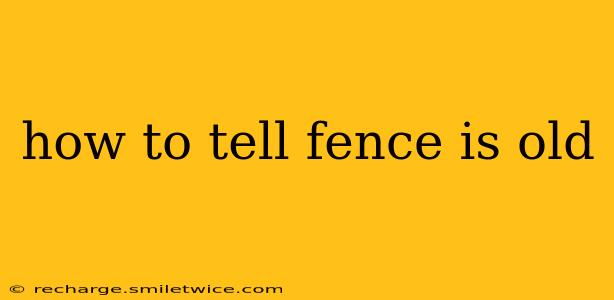Is your fence starting to show its age? Knowing when to replace a fence can save you from costly repairs and ensure the safety and security of your property. This guide will help you identify the telltale signs of an aging fence, so you can make an informed decision about its future. We'll cover everything from visual inspections to understanding the lifespan of different fence materials.
How Long Does a Fence Typically Last?
The lifespan of a fence greatly depends on the materials used, the climate, and the level of maintenance it receives. Generally, you can expect the following lifespans:
- Wood: 10-30 years. This varies greatly depending on the type of wood (cedar and redwood tend to last longer), the quality of the wood, and the climate. Exposure to moisture significantly impacts the lifespan of wooden fences.
- Vinyl: 20-30+ years. Vinyl is a durable material resistant to rot and insects, making it a longer-lasting option.
- Chain-link: 20-30 years. While chain-link fences are durable, the metal can rust and corrode over time, especially in harsh climates.
- Metal (Aluminum or Steel): 25-50 years (Aluminum) and 20-30 years (Steel). Aluminum is more resistant to rust than steel.
Visual Signs Your Fence is Getting Old
A thorough visual inspection is the first step in determining the age and condition of your fence. Look for these common signs:
- Rotting Wood: Check for soft, spongy wood, particularly at the bottom of posts and rails. This is a clear indication of water damage and decay. Probe the wood with a screwdriver; if it easily penetrates, the wood is likely rotten.
- Insect Damage: Look for holes, tunnels, or signs of insect activity. Termites, carpenter ants, and other insects can weaken the fence's structural integrity.
- Loose or Sagging Sections: Sagging fences indicate weakened posts or rails. Check for loose connections between posts, rails, and boards.
- Cracked or Split Wood: Cracks and splits, especially along the grain of the wood, weaken the fence and make it susceptible to further damage.
- Faded or Peeling Paint: This is a cosmetic issue, but it can also indicate underlying wood damage.
- Rust on Metal Fences: Rust is a significant sign of deterioration in metal fences, compromising their strength and stability.
- Deteriorating Vinyl: Look for cracks, fading, or discoloration in vinyl fences. While durable, vinyl can be affected by UV exposure over time.
How to Determine the Age of Your Fence (If Unknown)
If you're unsure of your fence's age, try these methods:
- Check Building Permits: Check your local municipality's records for building permits related to fence construction. This can provide the date of installation.
- Review Property Records: Your property records may contain information about previous improvements, including fence installation.
- Ask Neighbors: Long-time neighbors may recall when the fence was installed.
What Happens if You Don't Replace an Old Fence?
Ignoring an old, damaged fence can lead to several problems:
- Safety Hazards: A weakened fence can collapse, posing a risk to people and animals.
- Security Risks: A damaged fence compromises the security of your property, making it easier for intruders to access it.
- Decreased Property Value: An unattractive or damaged fence can lower your property's curb appeal and value.
- Costly Repairs: Minor repairs may delay the inevitable, ultimately costing more in the long run than a complete replacement.
When Should You Replace Your Fence?
The best time to replace your fence is before it becomes a safety hazard or requires extensive, costly repairs. If you've noticed several of the signs mentioned above, it's likely time to consider replacement.
This guide provides a comprehensive overview of how to assess the condition of your fence. Remember to prioritize safety and consider the long-term costs when making your decision. Regular maintenance can extend the life of your fence, but eventually, replacement will be necessary.
